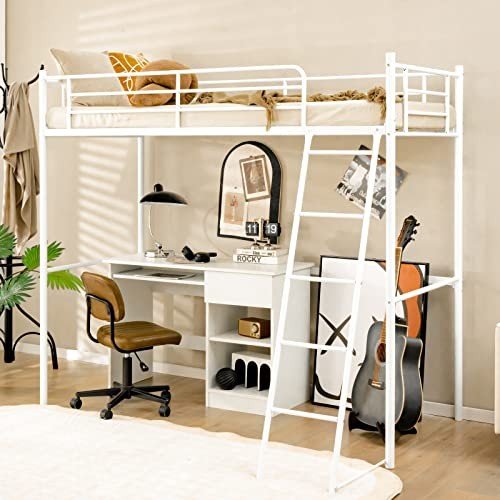A Comprehensive Guide to Children's Bunk Beds: Styles, Benefits, and Safety Considerations
Bunk beds have actually become a popular choice for families seeking to maximize space and offer an enjoyable sleeping environment for kids. With their special design, they use a creative and useful solution for shared bedrooms, playrooms, or even guest lodging. This post checks out the different styles of children's bunk beds, their advantages, safety considerations, and responds to some often asked concerns.
The Allure of Bunk Beds
Kid's bunk beds are more than simply space-saving structures; they are also a gateway to daring dreams and creative play. Below is a comprehensive evaluation of their numerous advantages.
Benefits of Bunk Beds
- Space-Saving: Bunk beds effectively use vertical space, making them an ideal choice for smaller rooms.
- Lively Design: Many bunk bed styles consist of slides, tents, and themed components, triggering creativity and enjoyment.
- Partner Sharing: Bunk beds are ideal for brother or sisters sharing a space or accommodating slumber parties.
- Versatile Use: Some designs can be separated into 2 specific beds, offering versatility as children grow.
- Storage Options: Many bunk beds come with built-in drawer storage or shelves, even more boosting their usefulness.
Designs of Children's Bunk Beds
The range of bunk beds offered today deals with different choices and requirements. Below is an overview of some popular designs.
| Style | Description | Best For |
|---|---|---|
| Requirement Bunk Bed | A traditional design featuring one bed stacked above another. | Brother or sisters sharing a space. |
| Loft Bed | Comparable to a bunk bed without the bottom bunk, allows for a work space or play location below. | Minimal space for play/desk. |
| L-Shaped Bunk Bed | 2 beds organized in an L-shape, typically with additional areas for storage or play. | Unique space layouts. |
| Twin Over Full | A twin bed over a full bed, accommodating various sleep needs. | Growing children and teens. |
| High Sleeper | Stands even greater than a loft bed, generally including a desk or play location listed below. | Older kids requiring more play/desk space. |
| Tent Bunk Bed | Bunk beds with a canopy or tent-like structure, producing a relaxing, enjoyable space. | Active and creative children. |
Key Features to Consider
When choosing the ideal bunk bed for children, the following functions deserve thinking about:
- Material: Bunk beds can be made from wood, metal, or a mix. Each has its special visual and resilience.
- Weight Capacity: Always verify the weight limit of the bunk bed to guarantee it can accommodate your kids safely.
- Safety Rails: Ensure the top bunk has sturdy rails to prevent falls.
- Ladder Security: A well-designed ladder needs to offer easy and safe access to the upper bunk.
- Ending up: Ensure any surfaces are non-toxic and safe for kids.
Security Considerations
Safety is paramount when it pertains to kids's bunk beds. The following guidelines ought to be complied with:
- Age Appropriateness: Generally, children under six years of ages should not sleep in the upper bunk due to security dangers.
- Sturdy Construction: Ensure the frame and products are strong and can support the weight without drooping.
- Routine Maintenance: Periodically check for loose screws, bolts, or other elements that may need tightening.
- Clear Play Area: Keep the area around the bunk bed devoid of toys and obstacles to minimize tripping dangers.
Setting Rules for Safe Use
Developing guidelines for bunk bed use will assist make sure safety:
- Limit Jumping and Climbing: Children ought to be advised against jumping from the leading bunk and getting on the sides.
- Monitoring Sleepovers: Monitor young visitors while they are utilizing the bunk bed for the first time.
- Educate on Ladder Use: Teach how to utilize the ladder securely, emphasizing the value of dealing with the ladder when going up or down.
Regularly Asked Questions
1. What age is suitable for a kid to sleep in the leading bunk?
A lot of manufacturers recommend that kids must be at least 6 years old to oversleep the upper bunk. This standard is created to alleviate the risk of falls.
2. Can bunk beds be personalized?
Yes, numerous makers provide customizable choices, consisting of colors, products, and extra functions like drawers or desks.
3. Are bunk beds safe for weight?
Bunk beds have weight limits, generally ranging from 200 to 400 pounds, depending on the model and product. Constantly check the manufacturer's specs.
4. How do I preserve and clean a bunk bed?
Regularly look for loose parts, keep the bed clean by cleaning down surface areas, and ensure the bedding is fresh to promote a safe and hygienic sleep environment.
5. Can bunk beds be separated into individual beds?
Lots of bunk beds feature a choice to separate them into two private beds, providing long-lasting flexibility.
Kid's bunk beds are more than simple furniture; they are a practical, versatile, and creative component of a kid's space. With different designs readily available and numerous safety considerations to bear in mind, parents can select the best bed that fits their space, satisfies their children's requirements, and imparts a sense of experience. By comprehending Bed Bunk For Sale abbeykirk.top , designs, and precaution associated with bunk beds, households can produce a delightful and safe sleeping environment for their kids. Whether for siblings sharing a room or space-saving services, bunk beds remain a precious choice for numerous homes.

